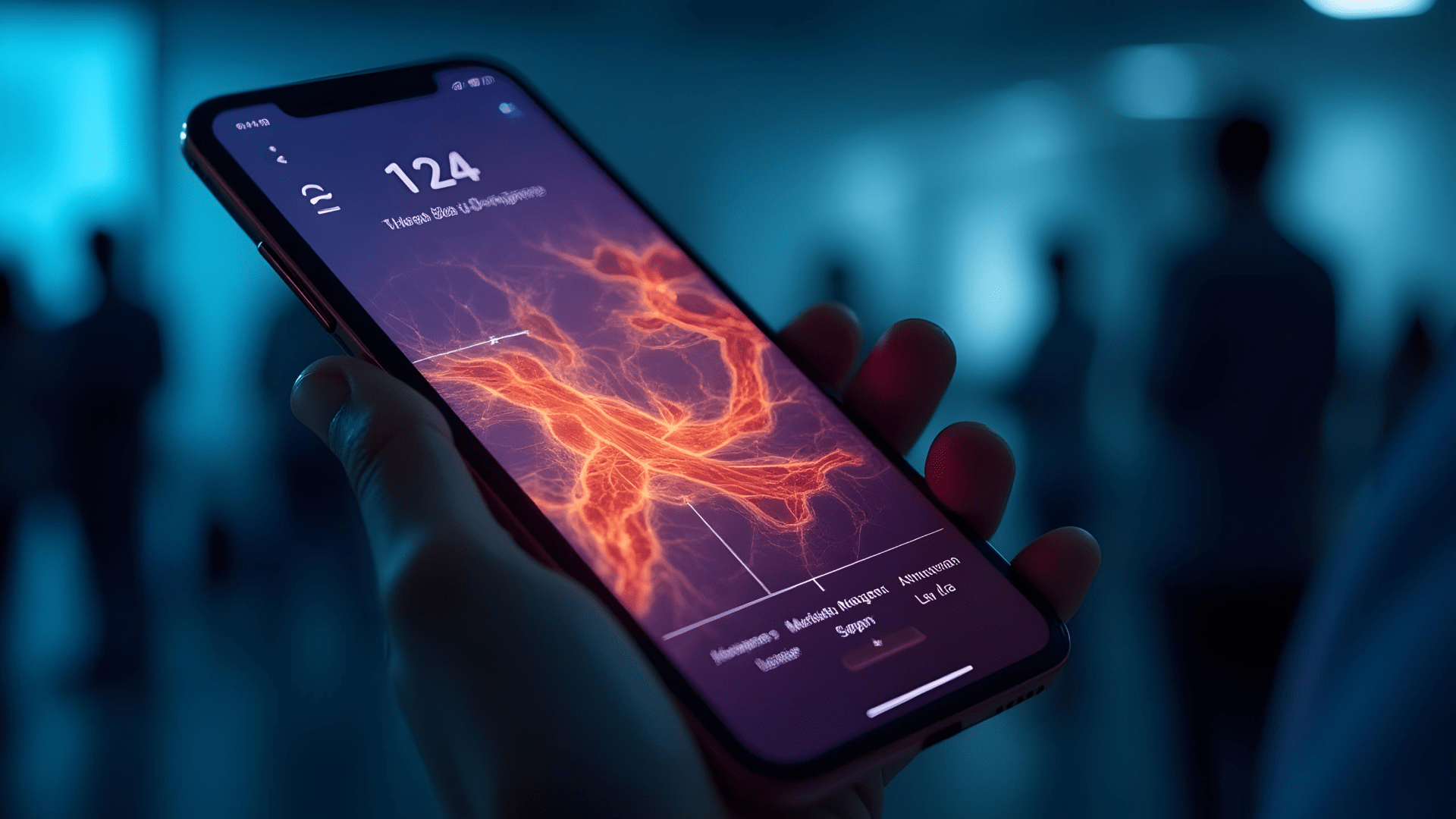Executive Summary: Risk management is the backbone of your medical device product development lifecycle — a guideline allowing you to turn risk into a value-add type of activity. To help you understand the key role Risk Management has throughout the entire product lifecycle, we talked with a number of experts coming from Greenlight Guru and HTEC Group who were eager to share their experiences and thoughts on this highly relevant topic. This is the first in the series of blogs that will dive deeper into managing risk throughout three key stages of medical device development: Discovery and Prototyping, Design and Manufacturing and Postmarket activities.
Risk management is the backbone of your medical device product development lifecycle — a guideline allowing you to turn risk into a value-add type of activity.
The challenge? MedTech companies often fail to mitigate risk even at the earliest stages of medical device development. And this is not because they don’t consider risk management to be a priority; it is because they often do not have the right strategy, people or tools to manage the risk with success.
And what happens if you don’t properly account for risk in the discovery and prototyping stage?
To answer this and other burning questions, we caught up with the team of MedTech and Regulatory and Compliance experts from HTEC Group, with deep experience in helping medical companies overcome any challenges in the medical device development, to hear their thoughts.
How critical is Risk Assessment in the early stage of medical device development?
While MedTech innovations are redefining patient care and health outcomes, they are also bringing new risks. Risk assessment in the early stages of development is an imperative here — it helps identify risks and vulnerabilities and allows you to establish mitigation solutions up front.
Risk assessment isn’t only about meeting regulatory standards, however; it’s also about ensuring patient safety, which is the primary goal of any medical equipment. To meet the common requirements found across all regulatory guidelines, you should have documented processes and procedures that outline your risk-based approach.
So, if you are looking to integrate Risk Management into your product development, why not start at the beginning?
Here are a few key steps to take in the early stages of your product development:
- Define the Intended use of the product — A starting point for your approach to risk management.
- Establish a Risk Management plan — A document which describes foreseeable risk management
- Identify key Risk controls — Once you conduct Risk Analysis and Risk Evaluation, you are on the right track to identify key Risk controls, measures you take with your medical device to reduce risk.
- Keep track of the effectiveness of these controls and measures taken to mitigate risk
Ultimately, Risk Controls will have the greatest impact on the probability of occurrence of a harm. Keep in mind that you can include multiple Risk Controls to achieve the best results.

“Risk management and innovation are not mutually exclusive; in fact, they can, and should coexist harmoniously.”
— Milos Cigoj, Healthcare and Life Science Quality and Compliance Lead at HTEC Group
Medical device security risks are some of the most frequent challenges that need to be identified and solved early on.
One way to improve a medical device’s security is by integrating Red and Blue Teams into the process. Milos, Healthcare and Life Science Quality and Compliance Lead at HTEC Group, explains that,
Simulating attacks with skilled Red Teams – or ethical hackers – can help uncover vulnerabilities and potential threats. Blue Teams, on the other hand, aim to build defenses and maintain effective security procedures. Their active participation is critical from the early design stages through post-market to be able to recognize, evaluate and eliminate possible risks.
Also, system designers and developers backed up by SecOps professionals can better understand threats in their device, which allows them to design robust systems with suitable controls, and create a detailed plan for managing and updating these safeguards over time.
What are the key steps medical organizations need to make before going into the product design phase?
To help you get a clearer picture of how to successfully integrate risk management at an early stage, MedTech experts agreed on the key steps you need to take to avoid huge costs and spending invaluable time on addressing any oversights.

- Understand the problem the device solves — This information will help you guide the project, ensure that the device solves a specific, well-defined problem for patients, healthcare providers, or the medical system.
- Know who you are targeting — Understanding the user needs, age, health, lifestyle, and technological skill to design a device that meets their needs.
- Listen to your customers feedback — Research and define target users or customers and understand how they see it, which value it provides for them and make sure it is a repetitive process.
- Understand the regulations that affect design and testing — Keep in mind that medical device classification determines regulatory pathways.
- Keep manufacturing and budget in mind — The device’s price and commercial feasibility will depend on manufacturing and production costs. If you don’t thoughtfully coordinate tech feasibility and the supply chain issues, manufacturing cost, especially in the fast-prototyping phase, can easily become a roadblock in the process.
- Create a clearly defined business model — The right business model can help you communicate details, focus on stakeholders and create internal awareness of financial, marketing and user details.
- Understand the reimbursement landscape — Gaining insight into insurance coverage for various medical devices can help you guide the device’s design and feature set and bring it to market faster.
Who needs to be involved with risk management in the early stage of medical device development?
Risk management and benefit-risk analysis is a team sport. In fact, a number of key professionals must be involved from the beginning of medical device development.
System Architect and the Clinical Safety Officer have crucial responsibilities in assessing technical and clinical risks jointly.
While the System Architect is responsible for controlling structural and technological hazards, the Clinical Safety Officer has a deep knowledge of clinical practice and patient safety concerns allowing them to estimate potential patient hazards and evaluate how the device’s risks relate to its clinical benefits.
Their acceptance would mean that all potential dangers have been recognized and mitigated, and that the benefits of the equipment outweigh the risks, and they should sign off on the risk-benefit analysis.

“The product team has a great responsibility to make sure that the right things are built in the right time and that this is feasible and scalable. Also, the product team needs to have a clear focus on priorities and lead the team towards a set vision.”
— Danijela Nestorovic, Principal Product Manager at HTEC Group
Danijela, Principal Product Manager for Healthcare and Life Sciences at HTEC Group, adds that certain limitations and risks in the innovation process can only trigger thinking outside of the box.
The key to the successful discovery process and innovation is to challenge all the aspects of the idea, especially when we are talking about disruptive medical devices.
What challenges do companies struggle to maintain balance between risk management and product management in the early stage of medical device development?
It’s a real struggle to maintain the delicate balance between product management, regulatory requirements, design controls, and risk management in the early stages of medical device development.
Here are some frequent reasons why a lot of medical devices fail:
1. Failing to do proper validation with users/customers
Validating the product with users from different angles with all the boundaries which device needs to include (physical or regulatory) is mandatory for reaching success.
Danijela Nestorovic, Principal Product Manager at HTEC Group, points out that,
Not properly implementing and aligning with regulatory affairs can have an adverse impact. The sooner we see misalignment in initial stages the bigger are the chances for success without additional costs. Setting up wrong metrics can be one of the reasons for missed direction when it comes to the validation. It all comes down to managing the different risks right from the start — this enables a smoother and faster certification process.
2. Failing to clearly communicate among teams
Medical device development is a multidisciplinary process that comprises engineers, physicians, regulatory specialists, quality professionals, product and marketing teams.
However, finding and assembling the initial team of experts that will assess, create, plan the driving development processes is challenging — this team will have to understand the full complexity that revolves around medical device development, from technical, regulatory, operational factors to logistics and supply chain management.

“By carefully balancing various factors, from technical, regulatory, and operational to logistics and supply chain management, with potential trade-offs, the team of experts will need to tailor an optimal development process with safety, compliance and high-quality as priority.”
— Hristina Panovska, Engineering and Delivery Lead at HTEC Group
3. Failing to understand market needs
Since the health industry is one of the most complex ones, product adoption can be a risky bet. A well-defined product management strategy can help in the alignment with market demands, increasing the likelihood of commercial success.
Danijela points out that “finding good market fit is not enough. You need to make sure to properly validate the prototype on the market with a high confidence that it will cover specific needs, solve critical pains or that the market is mature enough for a disruptive product.”
Milos adds that it is critical to understand the complexities of approval processes such as the FDA’s 510(k) or PMA in the US, and CE Marking in the EU from the start to be able to maintain a clear regulatory approach.
On top of this, the early implementation of robust design control processes and risk management ensures that the product meets the user needs while also being safe and effective.
To remove all the roadblocks, businesses must verify that they are developing a Quality Management System that is compliant with market regulations. “An effective QMS, far from being merely about compliance, establishes the groundwork for a consistent high standard of product quality and safety,” says Milos.
Introducing a New Era in Risk Management for MedTech
Risk management in MedTech is meant to be different from the early stage of product development.
And now, with the launch of Greenlight Guru’s new Risk Solutions, MedTech companies around the world are about to transform the way they manage risk.
Ready to experience the new era of risk management? Get your free demo of Greenlight Guru’s Risk Solutions, today.





